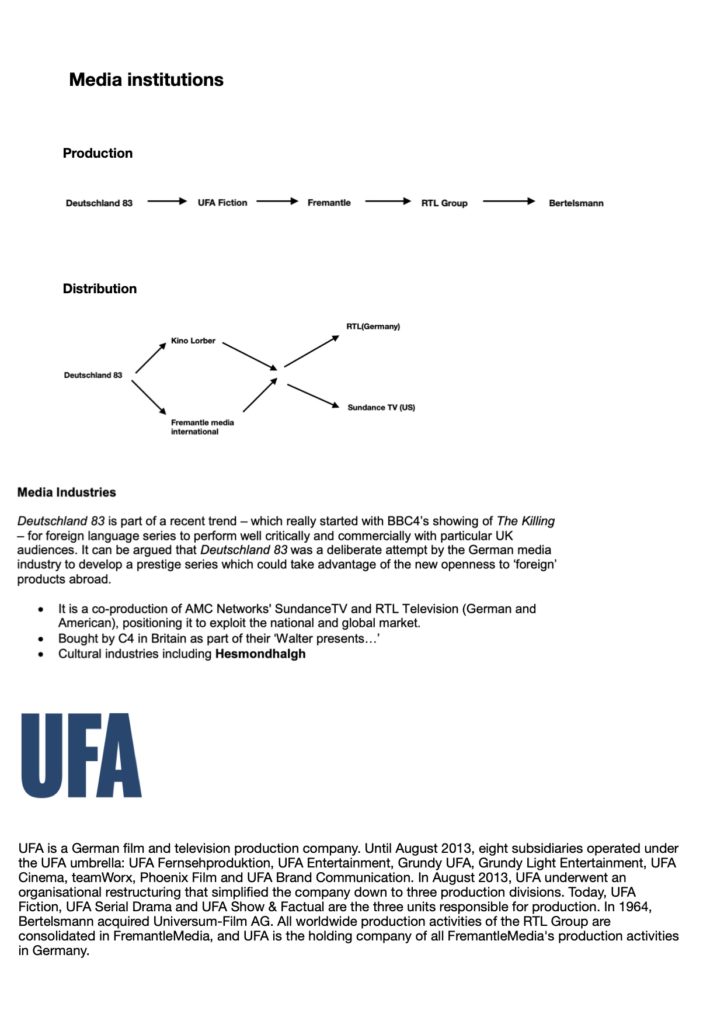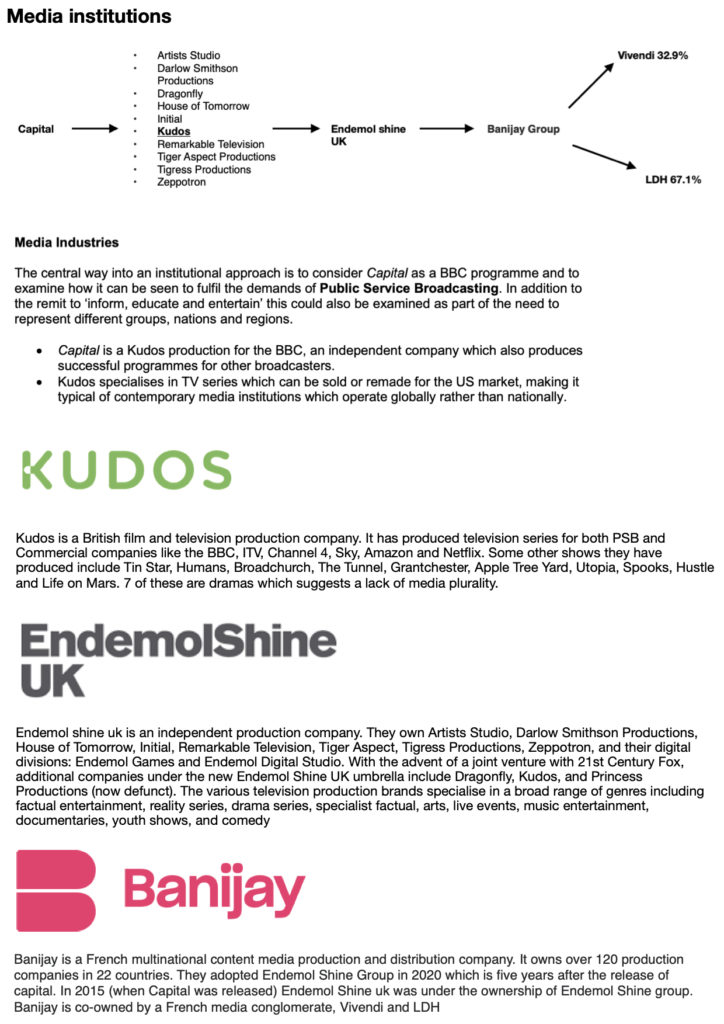




Gramsci’s theory of hegemony focusses on the idea that the view of the ruling class in society (upper class) has the power to influence and manipulate mass audiences. Their view becomes the cultural ‘norm’.
Evidence from CSPs
The Daily mail has accusations of being racist, sexist and homophobic. A former Daily mail reporter, Brendan Montague, stated that “None of the front-line reporters I worked with were racist, but there’s institutional racism.”
This links heavily to Gramsci’s theory because institutional racism is know as racism that has become a norm in a culture or institution. With regards to The Daily mail the hegemony isn’t shown as manipulating a mass audience yet influencing the employees of the mail. Some would believe that the more this behaviour is supported in the working environment, the more it may start creeping into journalism seen inside the paper.
The idea of hegemonic views becoming societal norms links to Gerber’s cultivation theory. The more society is exposed to certain views the more they will normalise them.
Conglomerates such as The Daily Mail and general trust who own several newspapers including the i and Daily mail which both have a large readership have the power to influence more people than someone who owns less of the media. As well as this, if we consider the i, which is aimed at travellers and those with limited time, we can expect a large diversity of readership since it is often found in large travel hubs such as Gatwick airport. The Daily mail also has a larger readership not only because it is a well know newspaper but because it is known as a ‘middle market’ newspaper which means it provides entertainment as well as sport and news therefore caters to a wider audience.
The Daily mail is known to be a right winged supporting newspaper yet the i (which is owned by the same company) is know as centralist and liberalist.
Another example of hegemony within the print media is Evgeny Lebedev. He is the owner of Lebedev holdings ltd who owns the Independent (the former sister paper of the i). They also own the evening standard which is known to be conservative. This is due to Lebedev’s close relations with conservative leader Boris Johnson. Lebedev was nominated for a life peerage by Boris Johnson. The implication here being that Lebedev uses his power of influencing society to win Johnson more supporters in return for political power.
Similarities
-Both newspapers are owned by The Daily mail and general trust
Differences
-The Daily mail was launched in 1896 where as the I was launched in 2010
-The two newspapers have different political alignments, the I is centralist and liberalist whereas the daily mail is right winged
-The I used to be owned by a company called JPImedia but was bought by The Daily mail and general trust in 2019 where as the Daily mail has alway been owned by The Daily mail and general trust
1. When they were first introduced – ie do they have a tradition?
The I: Launched in 2010
The daily mail: Launched in 1896
2. Are they part of a bigger organisational structure?
The I: The I is owned by the daily mail and general trust. The I used to be owned by JPI media however was bought by the daily mail in 2019
The daily mail: The daily mail is owned by The daily mail and general trust who own the daily mail and several other newspapers
3. Are they known for a particular political perspective?
The I: The I is known to be a liberalist and centralist newspaper
Daily Mail: The daily mail is known to be a right winged newspaper
4. What kind of journalism do they produce? What is their USP? What stories do they specialise in?
The I: The I focusses on business, news and sport
Daily mail:
5. What kind of people run the paper? Produce the stories?
6. Do they have a similar readership reach?
The i:
Daily mail: March 2020 it had an average daily readership of approximately 2.180 million, of whom approximately 1.407 million were in the ABC1 demographic and .773 million in the C2DE demographic.
7. Do they have a similar readership profile / target audience?
The I: The I is aimed at readers and lapsed readers of all ages and commuters with limited time
8. How are they currently doing? Increasing or decreasing sales and revenue?
The I: The paper had an average daily circulation of 302,757 in March 2013
Daily mail: It had an average daily circulation of 1,134,184 copies in February 2020
9. How are they looking to embrace new media technologies?
the i: is not
The daily mail: The mailonine is the most visited online newspaper website in the world. it was launched in 2011
10. Do they have a similar layout and design?
The I: The i is tabloid-size and stapled, and the first issue contained 56 pages. The i prides itself on having no supplements
A brief history
The daily mail was began by Alfred Harmsworth and his brother Harold in 1896


At its time of release it cost a half penny
The newspaper was an instant success with the first copy selling 297,215 more copies than expected
By 1902, at the end of the Boer Wars the circulation was over a million, making it the largest in the world
Alfred took up the editing side of production and Harold policed the business
It was the first newspaper to recognise the potential market of the female reader with a women’s interest section
In 1900 the Daily Mail began printing simultaneously in both Manchester and London, the first national newspaper to do so
Before the outbreak of WW1 the paper was accused of warmongering when it reported that Germany was planning to crush the British empire
Warmongering: encouraging or advocating aggression towards other countries or groups
The paper’s circulation dropped from 1,386,000 to 238,000 because Harmsworth criticised Lord Kitchener, the Secutary of state of war, regarding weapons and munitions. Kitchener was considered by some to be a national hero.
https://www.jstor.org/stable/25108535?seq=1#metadata_info_tab_contents
When Kitchener died, the Mail reported it as a great stroke of luck for the British Empire.
a contest with a prize of £100 for a new design of hat – a subject in which Northcliffe took a particular interest. There were 40,000 entries and the winner was a cross between a top hat and a bowler christened the Daily Mail Sandringham Hat. The paper subsequently promoted the wearing of it but without much success

Daily Mail Sandringham Hat
Lord Rothermere was a friend of Adolf Hitler, and directed the Mail’s editorial stance towards him in the early 1930s.
Notable features of the Daily Mail
The daily mail online is free to read (funded by advertising)
In 2011 MailOnline was the second most visited English-language newspaper website worldwide.
It has since then become the most visited newspaper website in the world, with over 189.5 million visitors per month, and 11.7 million visitors daily, as of January 2014

Curran and Seaton
-The idea that the media is controlled by a small number of companies primarily driven by the logic of profit and power
-The idea that media concentration generally limits or inhibits variety, creativity and quality
-The idea that more socially diverse patterns of ownership help to create the conditions for more varied and adventurous media productions
Noam chomsky
-Mass media is all propaganda
-Filter 1: size and profit orientation Large organisations are often profit orientation rather than serving on the interest of the public.
-Filter 2: The advertising license the majority of a corporation’s revenue is obtained from advertising. Therefore even outlets that stereotypically were not made to advertise choose a bias
-Filter 3: Sourcing mass media news Large media news outlets are widely trusted by the public. However, in order to keep a large audience news stories often have to be manipulated and changed in order to please other powerful members of society
-Filter 4: Flak and the enforcers Flak is the negative response an audience gives to a media source. This can have a devistating effect on a companies profit or representation. Thus loosing them audience members
–Filter 5: Anti-communism/war on terror War on terror is a major social control mechanism
Jurgen Habermas public sphere
-The public sphere is a metaphorical area in which public opinions are formed. This theory suggests that an audience are active consumers and take a particular stance as oppose to a passive
Antonio Gramsci hegemony
-Gramsci talks about the hierarchies that have formed in society and how they effect certain individuals. Those in a position of hegemonic power often control the stereotypes we believe in their favour through the media
Louis Althusser interpellation
Interpellation is the process in which we internalise societies values and make them our own. For example, stereotypes in society that are referenced and referred to as normal which through cultivation we are led to believe are true

